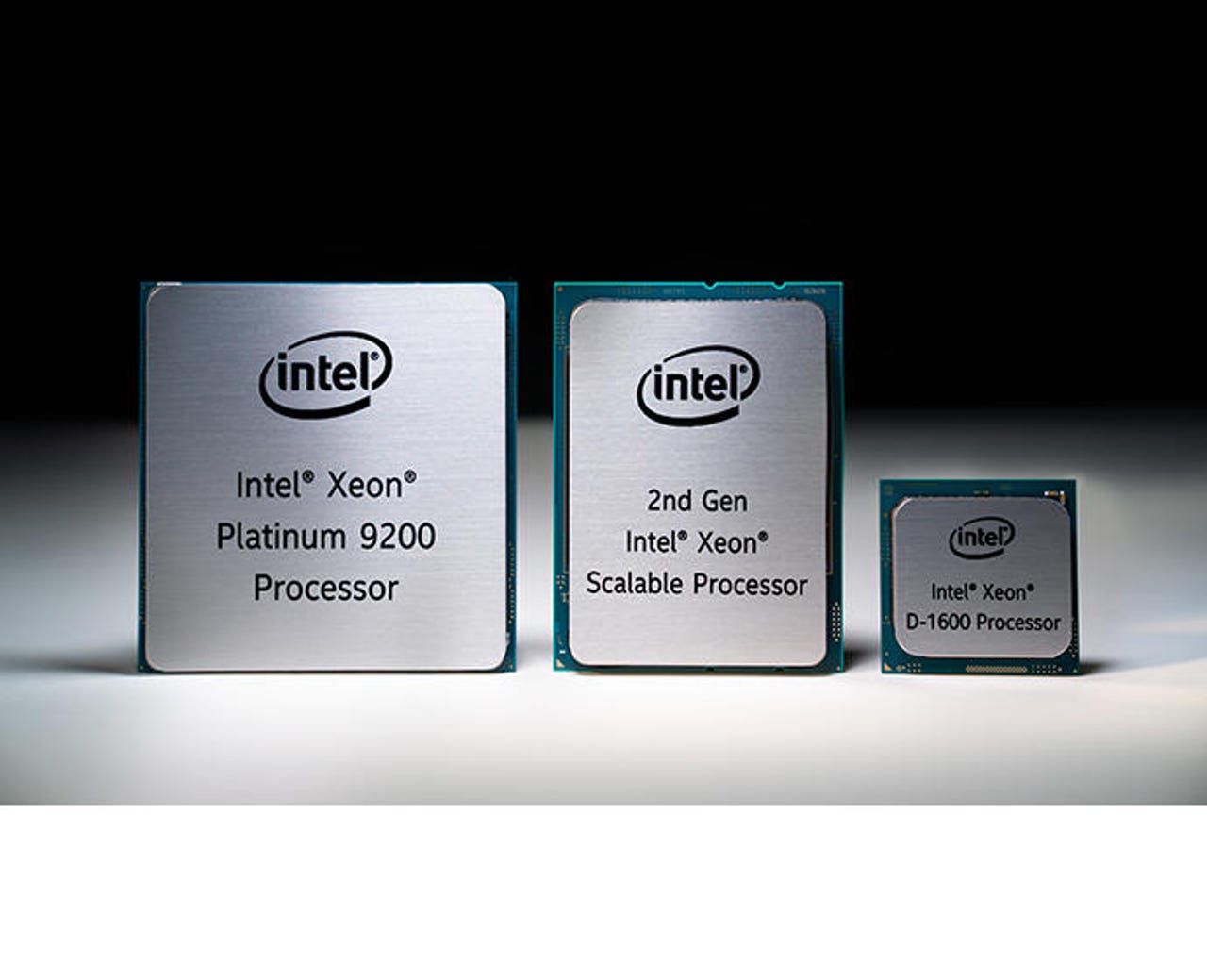Intel unveils broad Xeon stack with dozens of workload-optimized processors


The Intel Xeon Family (from left): Intel Xeon Platinum 9200 processor, 2nd-Gen Intel Xeon Scalable Processor and Intel® Xeon® D-1600 Processor. Intel Corporation on April 2, 2019, introduced a portfolio of data-centric tools to help its customers extract more value from their data.
CNE
Intel on Tuesday announced its broadest portfolio of Xeon processors to date, including more than 50 workload-optimized processors. The new Xeon chips, along with other new chips, memory and storage solutions, are all part of Intel's strategy to transform from a "PC-centric" company into a "data-centric" company.
The products announced Tuesday amount to an "unmatched portfolio to move, store and process data," Navin Shenoy, Intel EVP and GM of the Data Center Group, said at a launch event.
The portfolio responds to the growing demand for compute, Shenoy said, but also the diversifying customer needs that are emerging as computing expands. "We've seen an explosion in the types of workloads are customers are running," he said.
The new processors target high-growth workloads. Intel worked closely with customers to design dozens of custom processors. For instance, new network-optimized Intel Xeon Scalable processors, built in collaboration with communications service providers, should deliver more subscriber capacity and reduce bottlenecks in network function virtualized (NFV) infrastructure. Meanwhile, the Intel Xeon D-1600 processor is designed for computing at the edge, in dense environments where power and space are limited.
With the general availability of the 2nd-Generation Xeon Scalable processor, Intel is releasing a CPU with built-in acceleration for AI workloads. It includes Intel's Deep Learning Boost (DL Boost) -- technology for accelerating AI inference workloads like image-recognition, object-detection and image-segmentation. Intel highlighted the performance improvement businesses have seen with DL Boost. For instance, Microsoft has seen a 3.4X boost in image recognition, Target has seen a 4.43X improvement in ML inference and JD.com has seen a 2.4X boost in text detection.
Shenoy said Intel expects the 2nd-Generation Xeon Scalable processor to be the fastest-ramping Xeon ever.
The 2nd-Gen processor also supports Intel's Optane DC persistent memory, which moves more data into memory to give users faster insights from their data. Optane DC persistent memory also delivers up to 36 TB of system-level memory capacity when combined with traditional DRAM in an eight-socket system, representing a 3X increase in system memory capacity compared to the previous generation Intel Xeon Scalable processor.
The 2nd-Gen processors also have new hardware-enhanced security features, including side channel protections built directly into hardware.
Intel on Tuesday also announced that the Xeon Platinum 9200 processor will scale up to 56 cores (compared with the previously-announced 48 cores). The highest-performing addition to the Xeon family, the 56-core, 12 memory channel processor is designed to deliver top socket-level performance and DDR memory bandwidth in a wide variety of high-performance computing (HPC) workloads, AI applications and high-density infrastructure.
In addition to the Xeon announcements, Intel introduced Agilex FPGAs, new 10nm Intel FPGAs that are built to deliver flexible hardware acceleration for edge computing, networking and data centers.
Featured
As for storage, Intel announced the dual port Optane SSD DC D4800X, which adds high data resiliance to Intel's Optane DC SSDs. Shenoy called Intel's new Optane technology "a decade in the making."
Analyst Patrick Moorhead, founder of Moor Insights & Strategy, said in a statement to ZDNet that it's "hard to ignore that Intel has become a full datacenter technology provider with huge investments in compute, storage and networking. It's all-in on heterogeneous compute across CPU, GPU, FPGA and ASICs. This is the new Intel."
Intel's launch event Tuesday highlighted the number of partners and customers that collaborated with Intel to build its new products, as well as new solutions based on Intel technology. Server makers such as Lenovo, Dell, HPE and Supermicro timed refreshed systems based on the Intel processors.
Lenovo, for instance, announced a refresh of 15 ThinkSystem servers and 5 ThinkAgile appliances powered by 2nd-Gen Xeon Scalable processors. The upgrade has resulted in a double-digit increases in performance. Lenovo is the first vendorto leverage Optane memory on a SAP HANA workload with up to 12.5x faster recovery.
Supermicro, meanwhile, announced fully optimized support for 2nd-Gen Xeon Scalable processors on its entire portfolio of X11 servers, storage systems and Server Building Block Solutions. Dell announced updates to its Dell EMC PowerEdge servers, noting that adoption of Intel's new processors will offer up to a 40 percent increase in performance for core business applications.